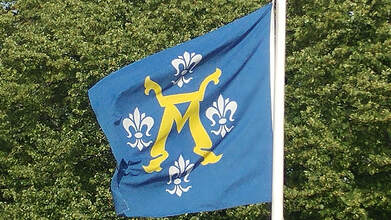 Turku, July 18, 2019 Given the late Swedish creation of Helsinki (1550), the presence of the Catholic Church in Helsinki certainly does not have the history that the Catholic faith expressed in Finland’s city of Turku. The beautiful city of Turku with the Aura river flowing through reveals signs of its medieval and Roman Catholic past – and present. Turku, its Finnish name is also known by its Swedish name, Åbo. Looking at the flag of Turku immediately present is the AM – Ave Maria -- on a blue background with the lily on four sides. The flag dates back to 1309 reflecting the earlier consecration of the cathedral to the Blessed Virgin Mary in 1300. The Cathedral of Medieval Turku was placed under the patronage of the Virgin and St. Henry, patron of Finland. These two elements, flag and Cathedral are indicative of a Roman Catholic town already settled and flourishing in the Middle Ages. The Dominican Order having arrived in Finlandia in 1249 established themselves in their new convent of St. Olaf in Turku close to the newly consecrated Cathedral. Turku was elevated to the status of Archdiocese and recognised as the most important Church in Finland. Blessed Bishop Hemming’s relics were located in the altar of the Roman Catholic Cathedral. Bishop Hemming of Turku knew Pope Clement VI and was also friends with St. Bridget of Sweden. The town’s Marian flag, the cathedral under the patronage of the Blessed Virgin and St. Henry, the Archbishop’s cathedral chair, demonstrate Turku’s solid link with the Church of Rome.
0 Comments
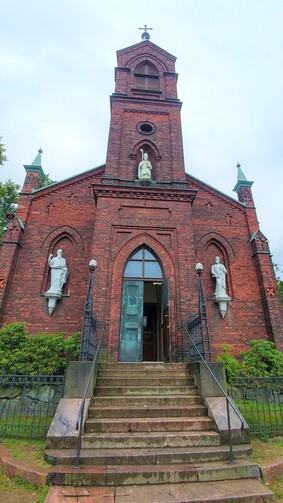 Helsinski, July 15, 2019 My visit to Finland was motivated by a Finnish friend of mine who had boldly left his Lutheran past to become a Roman Catholic. But not only did Tuomas embrace Catholicism, he was recently ordained as a Roman Catholic Priest. And so my visit to Finland, was to receive the priestly blessing of this courageous friend. Helsinki, or Swedish, Helsingfors, was created during Swedish control of Finland and later taken over by Russia until the Finns succeeded in claiming their independence from Russia during the period of the Communist revolution of 1917. Visiting Fr. Tuomas, I also discovered Catholic Finland. My arrival in Helsinki could not ignore two magnificent Churches, the Russian Orthodox which reflected the prominence of Russia and its russification policies and its Orthodox presence; then, the opulent Lutheran Church shaping the Helsinki skyline with twelve statues of Apostles financed through Finland’s taxation system privileging the Lutheran Church. 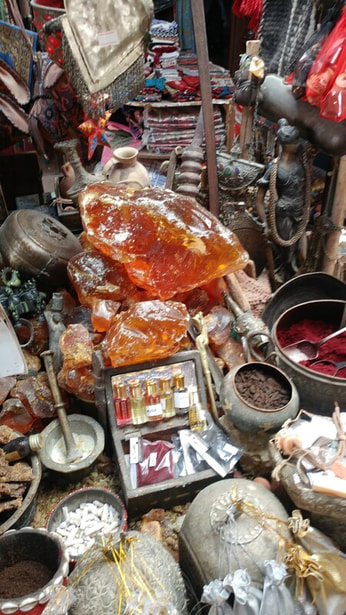 Could Petra have been a stopping point of the wise men following the star that would lead them to Bethlehem? It’s certainly probable. If we consider the geographic position, and commercial centre of Petra around the beginning of the Christian era, we have good reason to believe the Wise Men at least sojourned in Petra – perhaps even bought their gifts there. With the Nabateans, nomadic Arabs who monopolised the merchant trade route, Petra flourished in the 1st century BC, especially in the spice trade. The Nabatean inhabitants were especially skillful in collecting rainwater a precious commodity in the desert not only for human consumption but also to provide camels with plenty of drinking water for their long journeys across the dessert. It was in 106 AD that the Nabateans were defeated by the Romans and became part of the Roman Province of Arabia. So when did the Wise Men appear? Petra connects African and Arabian trade routes and even the northern route extending to Syria. Petra connects the Arabian trade route to the east as the Wise Men coming from the east followed the star west. The Wise Men are all from the east, Balthasar from Arabia with frankincense, Melchior from Persia with Myrrh, and Gaspar from India with Gold. They may have brought these gifts from the homeland, or with all the commerce in Petra, they may have obtained their gifts right in Petra. So, on this eastern axis they moved west. It makes sense to refuel in Petra whether an abundance of water filled the camels with liters of energy. A sophisticated town with inns for travellers, food, and that most important desert commodity: water. Then, of course, in the center of commerce, the Wise Men had the opportunity to explore and compare, Frankincense, Myrrh and Gold, as they returned to the path of their bright star leading the way north. 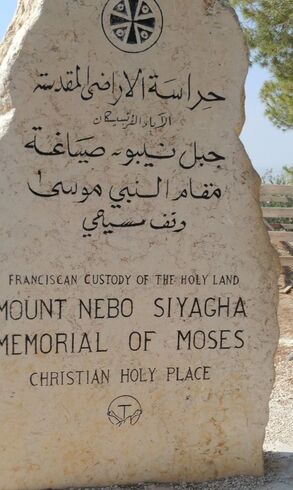 Mount Nebo, June 18, 2019 Standing on Mt. Nebo, overlooking the Plains of Canaan, it’s hard to imagine how Moses could have reached so close to the Promise Land, to observe from the Mountain what had been promised him -- and the Israelites. But Moses does not move beyond Mt. Nebo – he could only again stretch out his arm, but this time to designate the land to which God had directed him and the tribes of Israel. Moses died without setting foot in the land of Canaan (Deut. 34:6). Mt. Nebo represents one of the most powerful biblical stories of freedom, regret, incertitude, disappointment. To experience a lifetime journey, an arduous trek through the desert, to reach one’s destination, led by God, and to die before even experiencing the reward of years of sacrifice and fidelity, how so very human! Moses’ story is the story of those who follow God. Moses like Jesus after him acts in conformity to His divine will; the fundamental difference between the Old and New Covenantis that we place ourselves before God and His Mercy, thanks to His Son Jesus Christ. Jesus stands for us – He stands in our place. Jordan reflects the desert journey, years of wandering, the call to trust and hope. And God leaves us with leaders who are chosen to carry out His will – for us. This has been the role of the prophets, Jesus Christ as mediator, and the priest who mediates in persona Christi. The Church dedicated to Moses reminds the pilgrim travelling through Jordan, Moses walked these hills. A Byzantine Church from the 4th century along with a monastery, serves to commemorate the life, mission and death of Moses. The mosaic covered floor remains. Honouring God’s prophet who saves the slaves from drowning in the Red Sea, Moses points to someone far greater, the Son of God, who saves us from sin, by offering his Blood. And the Promised land is more than Canaan; the land Christ promises us is Paradise. 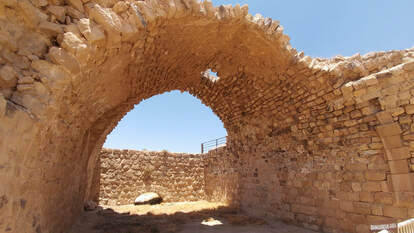 Al Karak, June 17, 2019 Al Karak, an ancient town in Jordan, is known for its fortified summit which dates to the Moabite and Nabatean periods. During the period of Byzantine Christianity Al Karak was also the seat of the Bishop. The castle standing on the summit was constructed during the 12-century Crusader period. As I examine the layers of bricks, dining room, kitchen, bedrooms, and stable, what stands out is the strategic position of this Crusader fortress, looking across the Moab plains, identifying threats in the vicinity. Al Karak has been inhabited by ancient Christian communities dating to the time of Jesus Christ and remained predominantly Christian until the Muslim penetration into the region in the 7th century. The fortresses served the Crusaders to defend the expansion of the Jerusalem Kingdom. The Crusader expeditions were launched from Roman Catholic Christendom as the Byzantine Empire and its Church had fallen to Islam. The responsibility was left to the Roman pontiff and the Western monarchs to launch and support the Crusades. The holy sights associated with Jesus and His Mother, and vulnerable pilgrims visiting these sights, required protection. 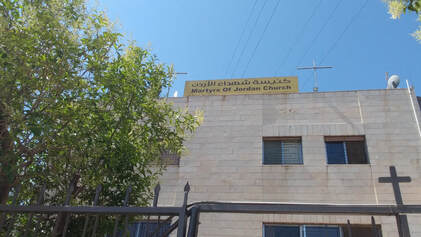 Marj Al-Hamam, June 15, 2019 Martyrs of Jordan Church, a Roman Catholic Church located in Marj Al-Hamam, seven kilometres south of Amman, responds to the needs of Amman’s Roman Catholic community. The Church is situated at a Christian “intersection”: from Queen Alia International Airport to Madaba and Kerak to the south, and the Dead Sea and Jordan River to the west. The Church serves the 350 families extending from Queen Alia International Airport to the wider district of Amman, also known as the Seventh Circle. The Church falls under the ecclesial jurisdiction of the Patriarch of Jerusalem and received funds for further expansion. Construction on the Church reflects the significantly added space of worship space for Amman’s Roman Catholics. The Church serves especially the faithful working at Royal Jordanian Airlines, in the Jordanian Army, and other services. The parish itself was established over thirty years ago, in 1986. The Church compound also includes space for the Sisters of St. Joseph of the Apparition. |
AuthorFr. David Bellusci, O.P. List by Titles
Archives
May 2023
Categories
All
|
 RSS Feed
RSS Feed